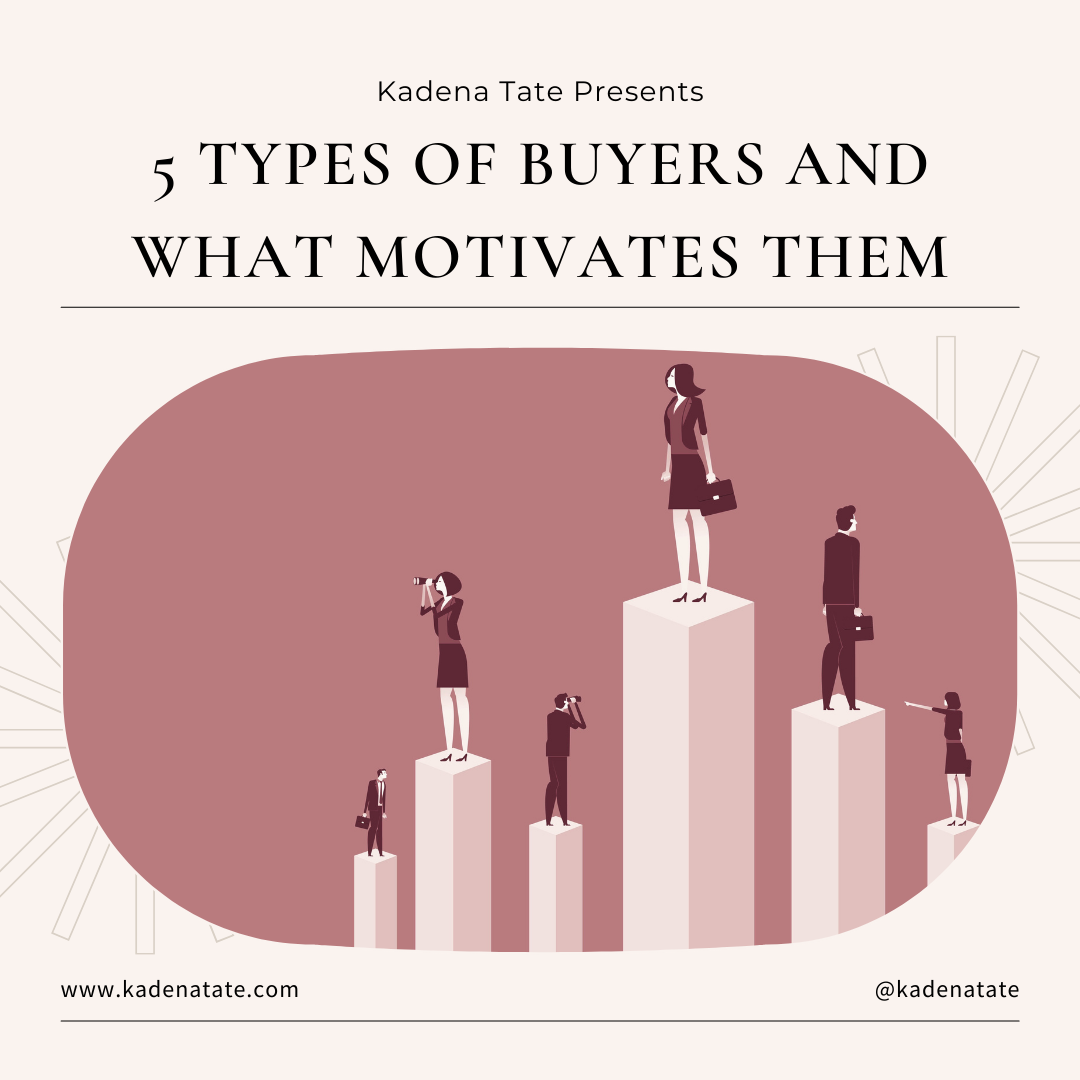5 Types of Buyers and What Motivates Them
When you're starting or growing a business, it's important to know who your ideal client is. Not everyone is a good fit for your product or service, and trying to sell to the wrong people can be costly and time-consuming. In this blog post, we'll discuss five types of buyers and what motivates them. We'll also give you some signs that someone might be willing to invest in your product or service. So, if you're ready to find more ideal clients, read on!
5 TYPES OF BUYERS
As you think about your ideal client, it's helpful to consider the different types of buyers out there. There are five main types: consumers, businesses, nonprofits, government agencies, and educational institutions. Each one has their own motivations and purchasing habits that you'll need to take into account. For this reason, you ar encouraged to create a buyer persona, buyer empathy map and buyer journey map to ensure that you totally understand buyer behavior.
Let's start with consumers. These are individuals who are buying products or services for themselves or their families. They're motivated by things like convenience, price, and quality. When selling to consumers, it's important to focus on how your product or service can make their lives easier or improve their wellbeing.
Businesses purchase products and services to use in their operations or to resell to their own customers. Their motivations include things like cost-savings, efficiency, and profitability. When selling to businesses, it's important to focus on how your product or service can help them save money, time, or resources.
Nonprofits are similar to businesses in that they purchase products and services to use in their operations. However, their motivation is different; they're driven by a mission to serve the public good. When selling to nonprofits, it's important to focus on how your product or service can further their cause.
Government agencies purchase products and services for the benefit of the general public. Their motivations include things like compliance, safety, and cost-effectiveness. When selling to government agencies, it's important to focus on how your product or service can help them meet their goals.
Finally, educational institutions purchase products and services to support the education of their students. Their motivations include things like quality, accreditation, and value. When selling to educational institutions, it's important to focus on how your product or service can improve the quality of education that they're able to provide.
BUYER MOTIVATION
Now that you know a little bit about the different types of buyers out there, let's talk about some signs that someone might be willing to invest in your product or service. Here are three things to look for:
First, they should have a need for your product or service. This might be something that's necessary for their business or that would make their life easier. Your branding, marketing and sales strategies must align and resonate with the prospective client. You are not required to prostitute yourself or set yourself on fire to keep a client warm. Get really clear about the transformational value being delivered so that you only entertain mutually beneficial client relationships.
Second, they should have the ability to pay for your product or service. This means that they should have the financial resources available to make the purchase. Have a payment plan in place and help people understand that it is an investment, not an expense to invest in their personal and professional development.
Finally, they should be willing to invest the time and effort into using your product or service. This means that they're not just looking for a quick fix; they're looking for a long-term solution. People are paying for change and transformation. Often times they under estimate how long it will take and how much work is actually required to achieve their goals. It tales time, energy, money and resources to grow yourself and your business, so be very honest about what is required to experience the transformation desired.
SHAMELESS SELF PROMOTION
If you can identify these three things in potential buyers, then you're well on your way to finding more ideal clients! Just remember to focus on how your product or service can meet their needs and solve their problems. To give you an example, I'll use myself, so that you can determine if NOW is the time to stop reading blog posts and take action:
Corporate entities whose employees are meddling in mediocrity. Kadena Tate provides unique and innovative team building exercises to improve employee morale, improve productivity, increase profitability and leverage efficiencies.
The Published author who wants to move her books from storage to her new readers and raving fans.
The Small business owner who MUST create a sustainable business growth model
Service based entrepreneur (Accountants, Attorneys, Coaches, Consultants, Speakers, and Trainers) with vision, processes, and systems that are Top Secret in that no one knows about them.
The unsung creative heroes of our society — Artists and Musicians who are ready to move past “garage band” status and monetize their creativity
Healing Practitioners and/or other service oriented professionals who have important services that would bring health and wholeness to many – if only they knew about it.
Have a great day! :)
![]() Kadena Tate
Kadena Tate
Hi! I am Kadena Tate. As a revenue strategist and subscription business model designer, I empower women small business owners to scale with subscriptions and unlock their path to riches.
https://www.kadenatate.com
